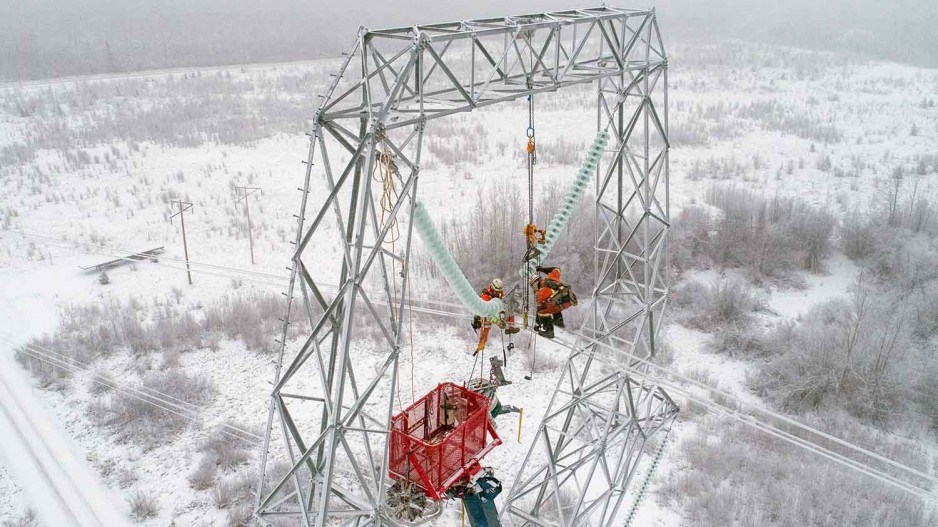Mekong fish corridors mapped for the first time but funding cuts threaten research

The first-ever acoustic telemetry network in the Mekong River has tracked key migration corridors critical to the survival of fish in Cambodia and Laos. To conduct the study, researchers caught fish from a dozen species and implanted them with small electric transmitters before releasing them back into the river. A network of receivers allowed the researchers to follow the migration movements of 81 of these tagged fish during both the dry and wet seasons. The findings, published in a recent study, provide empirical data reinforcing local ecological knowledge that underlines the importance of a free-flowing Mekong. With dozens of dams built, planned and proposed across the basin, researchers say the exact data points detailing the Mekong’s massive fish migration underline the risks of cutting off these vital migratory corridors with hydropower. “I hope this information gives pause to developers or governments working on those dams,” study lead author Jackman Eschenroeder, from US-based environmental consultancy FISHBIO, told Mongabay. “We’re trying to build a road map for where these fish are going with our acoustic telemetry network but it gives us just a glimpse into what these fish are doing.” This study is the first attempt to use acoustic telemetry at this scale in the Mekong Basin. Eschenroeder referred to the study as a “pilot effort” that highlights “the need to do more studies like this to improve the resolution of our knowledge.” But continued studies seem unlikely, as a freeze on US foreign aid widens the funding gap for conservation. Study co-author Zeb Hogan, project lead of the Wonders of the Mekong program, told Mongabay that “the study was luckily completed before the cuts” were announced by the Trump administration. “Given the cuts to American foreign aid, this type of work is no longer possible,” Hogan said. “The development pressures in the Mekong are continuing, but now a lot of the research and monitoring will stop. The pressures and threats are still there, but our ability to understand and mitigate those impacts is severely compromised.” Mekong migrations The Mekong, the longest river in Southeast Asia, runs more than 4,900 kilometres (3,000 miles) from its headwaters in the Tibetan Plateau to the South China Sea, flowing through China, Myanmar, Thailand, Laos, Cambodia and Vietnam. More than 20 per cent of Mekong fish species are migratory, according to past research cited in the recent study, which tagged 300 individual fish. The movement analysis of the report was based on the 81 fish that were detected for at least 30 days by the study’s 11 acoustic telemetry arrays. Given the cuts to American foreign aid, this type of work is no longer possible. The development pressures in the Mekong are continuing, but now a lot of the research and monitoring will stop. Zeb Hogan, project lead, Wonders of the Mekong The tags implanted in the fish were small electronic transmitters that emit unique sound pulses that hydrophone receivers can detect and decode. This allows researchers to track animal movements and study behaviour. “It is really astounding how fast and how far some of these fish moved,” Eschenroeder said. “It was beyond what I had originally hoped to be able to record.” The longest tracked migration was of a black-spotted catfish (Pangasius larnaudii) that travelled nearly 370 km (230 mi) after being released in Laos. The catfish swam down to the confluence of Cambodia’s Sekong, Sesan and Srepok rivers with the Mekong, known as the 3S River Basin, later swimming up and down the Sekong before merging back into the Mekong by the Lao border. Additionally, a giant freshwater whipray (Urogymnus polylepis) was tracked for the longest period of time, providing key insights into the movements of this endangered species. The Mekong generates 15 per cent of annual global inland fish catch, the study noted, providing protein to more than 70 million people in mainland Southeast Asia. Study co-author Sinsamout Ounboundisane, a fisheries biologist for FISHBIO with more than two decades of fisheries experience in Laos, told Mongabay that the Mekong is “the number one most important natural resource” in landlocked Laos because “life needs water.” “If we do not protect our water resources, we cannot have long lives,” said Ounboundisane, who personally implanted the tags of more than 20 fish. “We need international collaboration to support these projects because the equipment and the technology mostly comes from abroad.” A conservation setback The study’s acoustic telemetry network in Cambodia was funded by the US Agency for International Development, which has been mostly dismantled. “Given the rate and intensity of change in the basin, now is an extremely important time to be studying and learning about the Mekong’s fish populations,” Eschenroeder said. “Given the gap in funding, we are not going to be able to conduct these types of studies for the foreseeable future.” Eschenroeder said the funding gap is likely to help drive extinctions. “It is a really challenging time, especially for megafish, in this basin. These long-lived, large-bodied species are the most susceptible to impacts from changes to the river,” Eschenroeder said. “They are really the bellwethers of the health of the ecosystem.” A 368-page USAID document leaked to members of the US Senate Foreign Relations Committee showed that Wonders of the Mekong, which collaborated on the study, had its multiyear grant from USAID terminated, cutting off access to approximately US$20 million. These funds were earmarked for future economic studies, water quality tests, student trainings, technical workshops, leadership meetings and other Mekong activities. “Many of the Mekong’s most recognisable species are at imminent risk of extinction,” said Hogan, a research professor at the University of Nevada, Reno, with the Global Water Center, which is now the main funder of Wonders of the Mekong. “Not only might they go extinct, but we also won’t know because no one will be monitoring the situation.” The sudden loss of funding killed plans to expand research into the history and ecology of the giant freshwater whipray, the world’s largest freshwater fish, as well as hopes to continue the search for the recently rediscovered and critically endangered giant salmon carp (Aaptosyax grypus). “The will, the interest and the pride are there. But without support from organisations, like Wonders of the Mekong and USAID, there is a huge risk of a conservation setback,” Hogan said. “We are heading in the wrong direction in terms of our ability to support the region in keeping the Mekong River productive and healthy.” This story was published with permission from Mongabay.com.

















